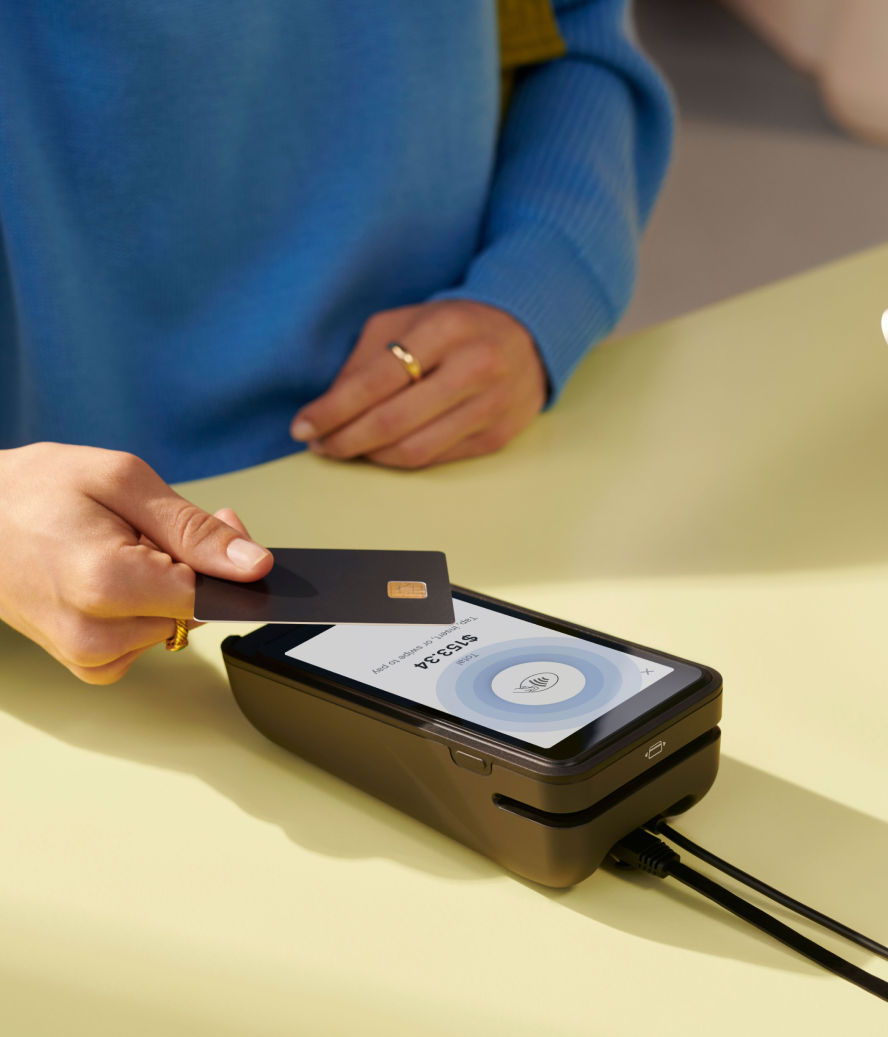Retail operations today depend on a clear understanding of store performance across physical and digital channels. A well-designed retail dashboard brings the most important data together: sales, inventory, staff performance, and customer behavior.
Unifying these data streams into a single view lets you spot trends faster, respond to issues proactively, and make confident decisions based on complete information rather than partial snapshots.
Ahead, you’ll learn the most important retail reports to pull and how to create a store performance dashboard.
Table of contents
Essential reports for your retail store performance dashboard
Gain more insights from your retail analytics with these reports:
POS reports
A POS system makes sure everything runs smoothly in your store. POS reports give insight into how, where, and what you sell across your physical locations. You can better understand product performance, location efficiency, and staff productivity.
Here are some helpful reports to pull:
- Retail sales by product: Shows the breakdown of total sales of your products at a POS location.
- Retail sales by product variant SKU: Provides sales data based on specific product variants.
- Retail sales by product vendor: Displays sales information categorized by product vendor.
- Retail sales by product type: Offers insights into sales based on the type of product sold.
- Retail sales by Point of Sale location: Shows sales data for each POS location.
- Retail sales by staff at register: Provides sales data attributed to staff members at the register.
💡 Using Shopify POS? Access these reports by going to Analytics > Reports in your Shopify admin, then clicking on Categories and selecting Retail sales to filter them.
Inventory report
Inventory management helps maintain the right amount of product at the right time—not too much, not too little.
Whenever you get this balance right, you avoid the twin problems of stockouts (frustrating customers and losing sales) and overstocking (typing up money in excess inventory). Having accurate inventory reports makes it easier to know what and when customers want, so you can make smarter inventory buying decisions.
Some important inventory reports to look at are:
- Month-end inventory snapshot: Displays the quantity of each product variant in stock at the end of each month.
- Month-end inventory value: Shows the total value of your inventory at the end of each month.
- Average inventory sold per day: Provides the average number of units sold per day for each product variant.
- Percent of inventory sold: Indicates the percentage of inventory sold during a specific period.
- ABC analysis by product: Categorizes products into A, B, or C grades based on their contribution to sales revenue.
- Product sell-through rate: Shows the percentage of total inventory sold during a selected timeframe.
- Days of inventory remaining: Estimates the number of days your current inventory is expected to last based on sales rate.
💡Using Shopify? Find these reports by going to Analytics > Reports in your Shopify admin, then clicking on Categories and selecting Inventory.
Sales reports
Sales reports break down your revenue streams across multiple areas, from timing and location to customer behavior. Tracking these numbers helps you identify your most profitable channels and spot emerging trends like peak shopping hours and optimal discount levels.
Some top sales reports to review are:
- Sales over time: Displays the number of orders and total sales over a selected period.
- Sales by discount: Shows sales data related to discounts applied.
- Sales by traffic referrer: Provides insights into sales based on the source of traffic.
- Sales by billing location: Displays sales data based on the customer's billing location.
- Sales by checkout currency: Shows the breakdown of sales by the currency used at checkout.
- Sales by channel: Provides sales data for each of your active sales channels.
- Sales by customer name: Displays the breakdown of orders by customer over a period of time.
- Average order value over time: Shows the average value of orders over a selected period.
💡 Shopify user? Navigate to the Reports section under Analytics and filter the Categories to show Sales reports in your Shopify admin.
Customer reports
Customer reports help you build a better understanding of your customer base. You can identify your most valuable customers and understand how different segments interact with your business.
By unifying customer data from your POS systems, ecommerce platform, and customer loyalty programs into a single view, you can understand the true customer journey and lifetime value. Plus, you can provide personalized customer experiences that build stronger relationships.
Here are the essential reports to monitor in your dashboard:
- Customers over time: Displays how many customers placed orders with your store over a selected period.
- First-time vs. returning customer sales: Shows the value of orders placed by first-time and returning customers.
- Customers by location: Provides data on new customers organized by geographical location.
- Returning customers: Displays data about customers whose order history includes two or more orders.
- One-time customers: Shows information about customers who have placed only one order.
- Customer cohort analysis: Analyzes groups of customers based on their first purchase date and their repeat purchase behavior.
- Predicted spend tier: Categorizes customers based on their predicted spending behavior.
- At-risk customers: Identifies customers who are less likely to return and make another purchase.
- Loyal customers: Highlights customers who have shown loyalty by making multiple purchases.
- RFM customer analysis: Segments customers based on Recency, Frequency, and Monetary value.
💡Using Shopify? Find these reports by going to Analytics > Reports in your Shopify admin, then clicking on Categories and selecting Customers.
How to create a store performance dashboard
First, decide what you want to track. Most retailers focus on:
- Daily and weekly sales trends
- Inventory levels
- Best-selling products
- Customer repeat purchase rates
- Average order value
- Foot traffic data
Once you know what to monitor, set up visualizations in your Shopify Analytics.
Shopify's Analytics dashboard is customizable and allows you to monitor key metrics such as sales, orders, and customer behavior. You can add various data cards to the dashboard for a quick overview of your store's performance.
The Metrics library lists all available metrics that can be included in your Analytics dashboard. Add, remove, and rearrange these metrics to tailor the dashboard to your needs.

With a Shopify Advanced plan or higher, you get more sophisticated reporting tools, such as:
- Custom reports: Create custom reports by building them from scratch, modifying existing default reports, or duplicating and editing existing reports. This is available for stores on the Advanced Shopify plan or higher.
- Data exploration: The new Shopify Analytics lets you create a custom data exploration, which allows you to analyze specific metrics or dimensions in detail. You can start from an empty state or modify an existing report.
- ShopifyQL Query Editor: This tool helps you create queries to extract specific data points and visualize them in different formats, such as line or bar graphs.
Turn your data into action with Shopify
Good retail business intelligence helps you see how all the puzzle pieces fit together. When your data flows through a single, unified platform like Shopify, you get the complete picture of your business.
Shopify combines everything we've covered, from POS and inventory to sales and customer insights, into one cohesive view. Instead of jumping between systems or reconciling different reports, you can see how your retail stores and digital channels work together to drive your business forward.
Store performance dashboard FAQ
What is a store dashboard?
A store dashboard gives you a real-time window into how your retail business is performing, displaying your most important metrics in one place. You can monitor everything from sales and inventory to customer behavior at a glance.
What should be included in a performance dashboard?
Your store dashboard should focus on the numbers that impact your bottom line, like sales performance, inventory levels, and customer trends. It needs to surface the metrics that help you make daily decisions while also showing longer-term patterns that inform your strategy.
How do I create a store performance dashboard?
Start by identifying the key metrics that matter most for your specific business goals and make sure you have reliable ways to track them consistently. Then choose a platform that can pull all this data together seamlessly, like Shopify, and present it in a way that makes it easy to spot trends and take action.





